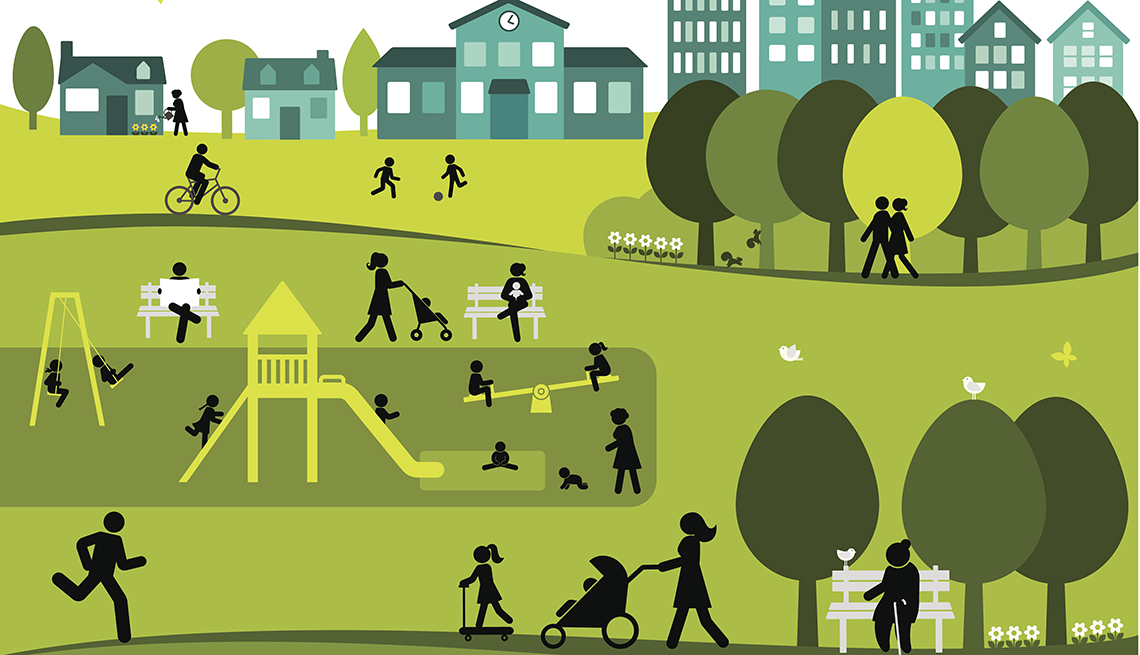AARP Hearing Center

With its sprawling suburbs and sky-high housing costs, California can be a difficult place for residents with challenges like mobility issues and fixed incomes to stay in their homes as they age. In Silicon Valley, for example, the average home costs $1.6 million.
State leaders hope to change that. In June, California became the eighth state to join the AARP Network of Age-Friendly States and Communities, committing to develop a strategy and resources to help it become a great location for everyone to live, play and age in place.
Dozens of California localities have already become members of the AARP Network, which is part of a World Health Organization campaign to prepare for a rapidly aging global population and increased urbanization.
AARP is managing the U.S. effort to help create communities that are more livable and better able to support people of all ages, particularly in California, with its 40 million residents.
Advocates say the statewide age-friendly focus will help.
“You’ll not only have the full force of local governments that have already joined the AARP Network but also that of the state government, looking at age-friendly policies across various departments,” says Rafi Nazarians, an associate state director for AARP California.
By 2030 a quarter of Californians will be over age 60, nearly double the number from 2010.
First Steps
California is starting with state-wide surveys and setting goals that dovetail with the state’s Master Plan for Aging. Cities and counties that joined the AARP Network earlier have already made strides, advocates say.
Los Angeles, for instance, used its age-friendly action plan to find ways to deliver meals to homebound adults during the coronavirus pandemic, Nazarians says.
Santa Clara County brings together professionals in aging services and older volunteers for summits, to focus on issues such as social isolation and traffic safety, says Diana Miller, seniors’ agenda project manager for the county’s Department of Aging and Adult Services.
“I look at age-friendly as you don’t need to create a lot of new programs, but through the age-friendly lens you can create, transform or expand programs or policies,” Miller says.
The county government worked with its cities to expand a volunteer ride network for older residents. “You’d think the rides are needed for medical appointments, but a very popular one is to the cemetery,” Miller says. One woman, for example, wanted to visit the grave of her daughter, who had died of COVID-19.
While Santa Clara County’s population of about 2 million has a lot of wealth, almost half of those 65 and older live in poverty, according to Elder Index data calculated by UCLA.
The county is expanding high-speed internet access and providing training for older residents as part of its age-friendly efforts. Miller hopes to use the AARP Network to improve older adults’ access to affordable housing: “We haven’t tackled that yet. That’s such a big one.”
Barbara Kingsley-Wilson is a writer living in Long Beach.
More on Livability
- What is a livable community?
- How livable is your community?Livable Communities Challenge































































